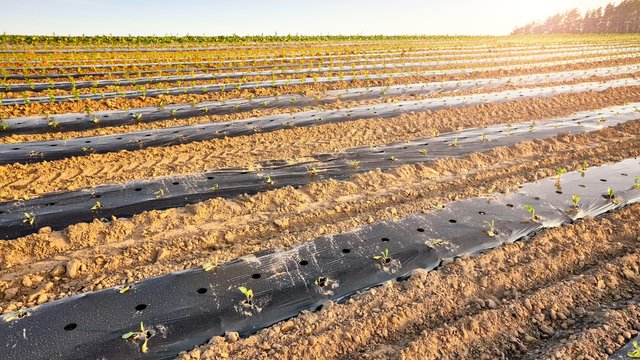Why Farmers Rely on Vinyl Tarps for Weather Protection
Introduction
In the fast-paced and often unpredictable world of construction, protecting materials and maintaining safe, organized work areas is essential to meeting deadlines and preserving project quality. One tool that consistently proves its worth on the job site is the vinyl tarp. Known for its strength, weather resistance, and versatility, vinyl tarps are a staple in construction environments across the country. Whether shielding building materials from the elements or creating temporary enclosures for work zones, vinyl tarps provide practical solutions that help keep operations running smoothly.
This blog explores how vinyl tarps are used in construction to safeguard materials, improve site safety, and support efficient workflows.
1. Protecting Building Materials from Weather Damage
Construction materials such as lumber, cement, insulation, drywall, and metal are highly susceptible to damage when exposed to rain, snow, and UV rays. Moisture can warp wood, weaken structural components, and reduce the effectiveness of insulation. Vinyl tarps serve as a reliable barrier against these threats thanks to their waterproof and UV-resistant properties.
Unlike lightweight tarps that may tear or degrade quickly, vinyl tarps offer heavy-duty protection for long-term exposure. Crews often use them to wrap stacks of materials or cover open pallets, ensuring that vital supplies remain in usable condition, no matter the forecast. This protection not only preserves material integrity but also saves money by preventing waste.
2. Creating Temporary Shelters and Enclosures
Construction sites are dynamic, with constantly changing needs. Vinyl tarps can be quickly deployed to create temporary shelters or enclosed work areas. This is especially useful for projects that require workers to continue tasks in adverse weather or to shield sensitive work—such as painting or electrical installations—from dust and debris.
By hanging tarps from scaffolding or framing, contractors can form makeshift walls or ceilings that provide privacy, reduce wind exposure, and help control temperature. Clear vinyl tarps are also an option when visibility and light transmission are needed within the enclosure. These flexible solutions offer a cost-effective way to adapt to changing site demands while maintaining productivity.
3. Containing Dust and Debris on Active Sites
Construction often involves processes like demolition, cutting, and sanding, which generate large amounts of dust and debris. Without proper containment, this can pose health risks, disrupt nearby activities, and violate local regulations. Vinyl tarps are frequently used as barriers to contain particulates within a designated area.
Thanks to their impermeable surfaces and reinforced seams, vinyl tarps effectively block dust from spreading beyond work zones. This is particularly beneficial in urban construction, remodeling projects, or jobs near public spaces. Installing vinyl tarps as containment walls or floor-to-ceiling dividers helps maintain a clean site and demonstrates professional commitment to safety and compliance.
4. Covering and Protecting Heavy Equipment
Beyond materials, construction crews must also safeguard expensive machinery and equipment. Backhoes, mixers, generators, and scaffolding are all vulnerable to weather damage, especially during off-hours or delays. Vinyl tarps provide a rugged cover that can withstand wind, moisture, and sunlight without breaking down.
Because vinyl tarps come in a variety of sizes and thicknesses, they can be customized to fit over irregularly shaped equipment or cover entire trailers. Grommeted edges allow for secure tie-downs, reducing the risk of shifting or blow-offs in high winds. Regular use of tarps for equipment protection helps extend the lifespan of construction assets and reduces downtime caused by maintenance or repairs.
5. Enhancing Job Site Safety and Organization
A cluttered or unprotected job site can quickly become a safety hazard. Vinyl tarps play a key role in promoting organized, hazard-free workspaces. By using tarps to section off areas, mark boundaries, or cover sharp objects and tripping hazards, site managers can minimize risk and ensure smoother operations.
Brightly colored vinyl tarps can be used as visual indicators to signal restricted areas or danger zones. Meanwhile, durable ground covers made from vinyl material can keep walking surfaces clean and dry, reducing the likelihood of slips and falls. Ultimately, tarps are not just about protection—they’re about maintaining control and clarity on the job site.
Conclusion
Vinyl tarps are an indispensable part of modern construction. Their unmatched durability, weather resistance, and adaptability make them ideal for protecting building materials, equipment, and workers alike. From simple coverings to full-scale enclosures, these tarps meet the demands of ever-changing construction environments. By incorporating vinyl tarps into daily operations, contractors can reduce losses, boost efficiency, and uphold higher standards of safety and professionalism on every job site.
